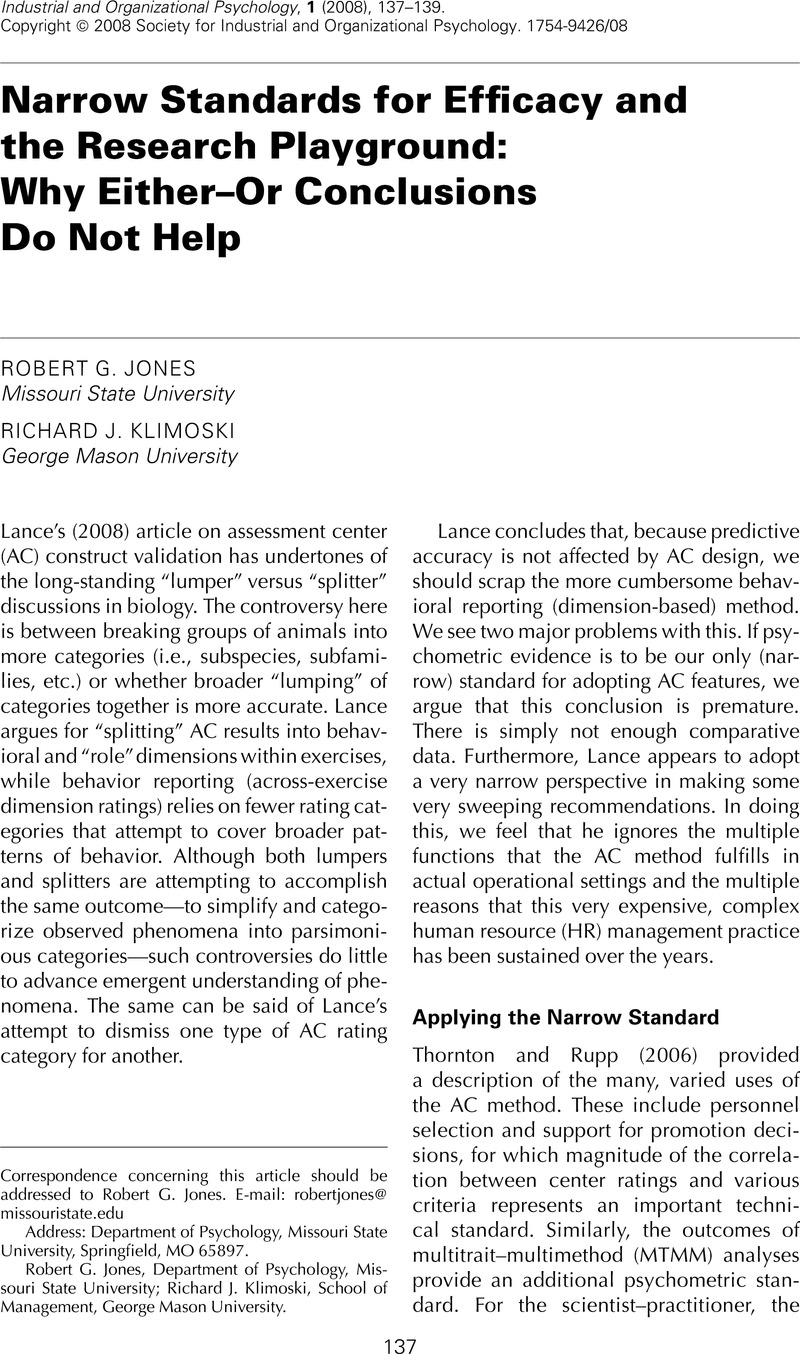Crossref Citations
This article has been cited by the following publications. This list is generated based on data provided by Crossref.
Lance, Charles E.
2008.
Where Have We Been, How Did We Get There, and Where Shall We Go?.
Industrial and Organizational Psychology,
Vol. 1,
Issue. 1,
p.
140.
HOFFMAN, BRIAN J.
MELCHERS, KLAUS G.
BLAIR, CARRIE A.
KLEINMANN, MARTIN
and
LADD, ROBERT T.
2011.
EXERCISES AND DIMENSIONS ARE THE CURRENCY OF ASSESSMENT CENTERS.
Personnel Psychology,
Vol. 64,
Issue. 2,
p.
351.
Dewberry, Chris
2024.
Assessment centers do not measure competencies: Why this is now beyond reasonable doubt.
Industrial and Organizational Psychology,
Vol. 17,
Issue. 2,
p.
154.



